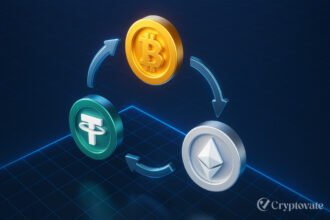– Ad –
| Getting your Trinity Audio player ready... |
Ethereum remains a cornerstone of decentralized finance (DeFi) and blockchain technology in 2025, powering smart contracts, NFTs, and decentralized applications (dApps). However, one aspect of Ethereum that continues to challenge users is gas fees—the cost of executing transactions or smart contracts on the network. Understanding gas fees and how to optimize them can save you significant costs. This article breaks down what gas fees are, why they exist, and actionable strategies to reduce them in 2025.
What Are Gas Fees?
Gas fees are payments made to compensate Ethereum miners or validators for processing and validating transactions on the blockchain. Every action on Ethereum, from sending ETH to interacting with a dApp, requires computational resources. Gas is the unit that measures this computational effort, and the fee is paid in ETH.
Gas fees have two main components:
- Base Fee: A minimum cost set by the network, which fluctuates based on demand.
- Priority Fee (Tip): An additional amount you can pay to incentivize faster transaction processing.
Since Ethereum’s transition to Proof of Stake (PoS) with the Merge in 2022, validators now process transactions, but the gas fee structure remains similar. Fees increase when the network is crowded and decrease when there’s less activity.
Why Do Gas Fees Matter?
High gas fees can make small transactions uneconomical. For example, transferring $10 worth of ETH might cost $5 in gas during peak times, eating into your funds. By understanding and optimizing gas fees, you can:
- Save money on transactions.
- Improve efficiency when using dApps or DeFi platforms.
- Make informed decisions about when and how to interact with Ethereum.
Factors Affecting Gas Fees in 2025
Several factors influence gas fees:
- Network Congestion: When many users transact simultaneously (e.g., during a popular NFT drop), gas fees spike.
- Transaction Complexity: Simple ETH transfers cost less gas than complex smart contract interactions.
- Market Volatility: High crypto market activity often increases network demand.
- Layer 2 Adoption: Solutions like Optimism and Arbitrum reduce fees by processing transactions off-chain while leveraging Ethereum’s security.
How to Save on Gas Fees in 2025
Here are practical strategies to minimize Ethereum gas fees:
1. Time Your Transactions Wisely
Gas fees vary throughout the day and week. Use tools like Ethereum Gas Price Charts to identify low-congestion periods, typically late at night or early mornings in your timezone. Scheduling transactions during these times can significantly reduce costs.
2. Leverage Layer 2 Solutions
Layer 2 (L2) scaling solutions handle transactions away from Ethereum’s main chain (Layer 1), significantly reducing costs. Popular L2 networks in 2025 include:
- Optimism: Offers low-cost transactions with fast confirmation times.
- Arbitrum: Ideal for DeFi and NFT transactions.
- zkSync: Uses zero-knowledge proofs for secure, cheap transactions.
To use L2, transfer your funds to an L2 network via a bridge, then transact there. Fees for bridging are often lower than repeated Layer 1 transactions.
3. Optimize Gas Settings
When sending a transaction, wallets like MetaMask allow you to customize gas settings. Choose:
- Low Gas Price: For non-urgent transactions, set a lower gas price to save costs, though confirmation may take longer.
- Gas Limit: Ensure the gas limit is sufficient to avoid failed transactions, which still incur fees.
Use gas trackers to estimate optimal settings based on current network conditions.
4. Batch Transactions
Instead of multiple small transactions, combine actions into a single transaction when possible. For example, approve and swap tokens in one go using a DeFi protocol that supports batching. This reduces the total gas spent.
5. Use Gas-Efficient dApps
Some dApps are optimized for lower gas usage. Research platforms before using them, and prioritize those built on L2 or designed with gas efficiency in mind.
6. Explore Gas Token Solutions
Certain protocols offer gas rebates or tokens that offset fees. For instance, some DeFi platforms refund a portion of gas costs in their native tokens. Stay updated on projects offering such incentives in 2025.
Also Read: Is Ethereum a Smart Investment Choice in 2025?
The Future of Gas Fees
Ethereum’s ongoing upgrades, like sharding and further L2 improvements, aim to make transactions cheaper and faster. By 2025, increased L2 adoption and optimized protocols are expected to lower average fees, making Ethereum more accessible. Staying informed about these developments can help you plan cost-effective transactions.
Conclusion
Gas fees are an essential part of Ethereum’s ecosystem, but they don’t have to break the bank. By timing transactions, using Layer 2 solutions, optimizing gas settings, and staying informed about network trends, you can save significantly in 2025. Whether you’re a DeFi enthusiast, NFT collector, or casual user, these strategies will help you navigate Ethereum’s gas fee landscape efficiently. Start applying these tips today to make your Ethereum transactions more cost-effective!
FAQs
When is the ideal time to make transactions on Ethereum?
Transact during low-congestion periods, like late nights or early mornings, when gas fees are typically lower. Use gas price trackers for real-time insights.
Are Layer 2 solutions safe?
Yes, reputable L2 solutions like Optimism and Arbitrum leverage Ethereum’s security while offering lower fees. Always use trusted platforms and verify bridge security.
Why do gas fees fluctuate so much?
Gas fees depend on network demand. High activity, like NFT launches or market surges, increases congestion, driving up fees.
Can I avoid gas fees entirely?
You can’t avoid gas fees on Ethereum’s Layer 1, but using Layer 2 networks or gas-efficient dApps can drastically reduce costs.

















